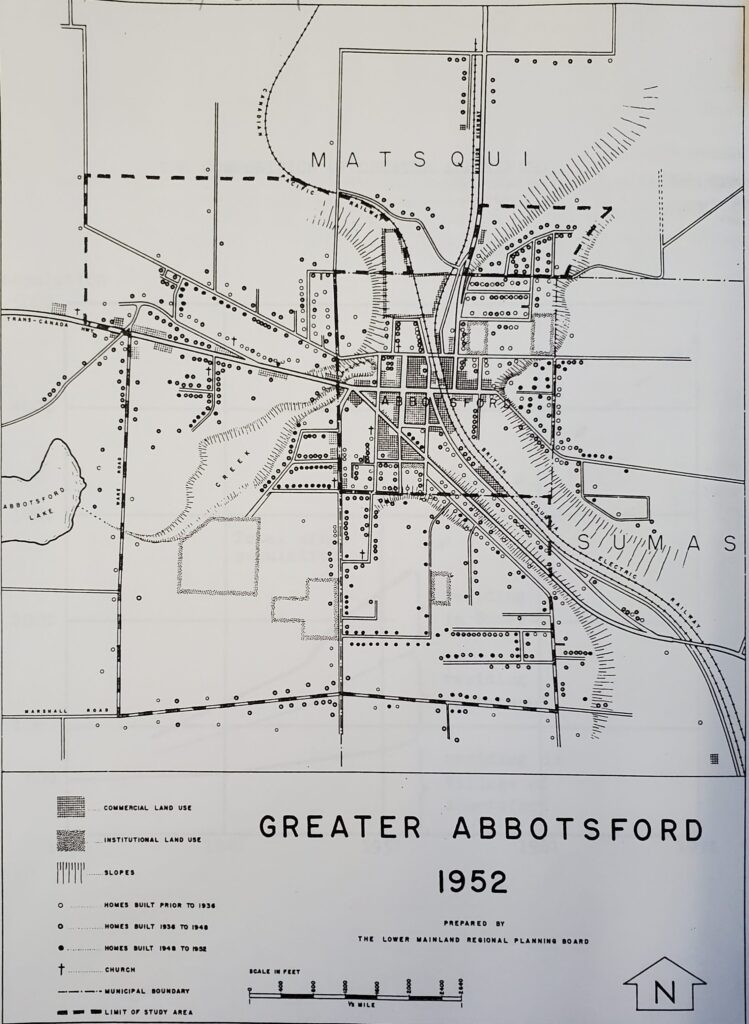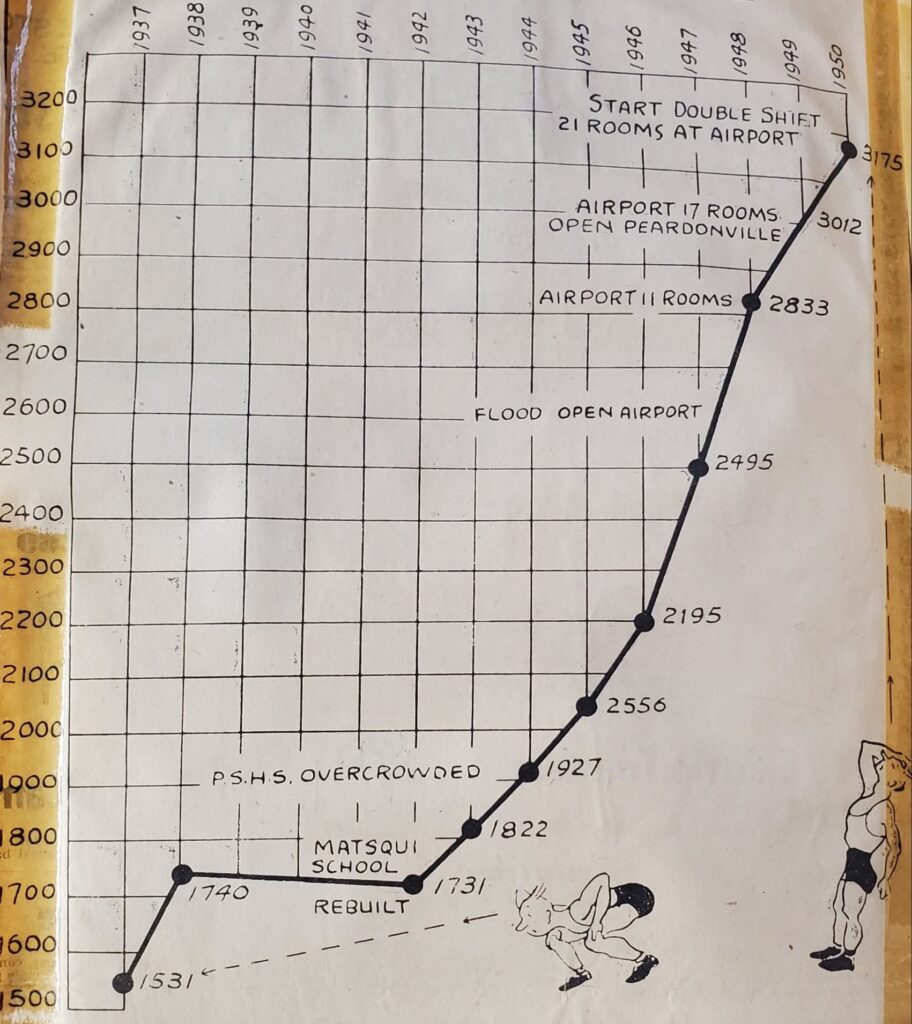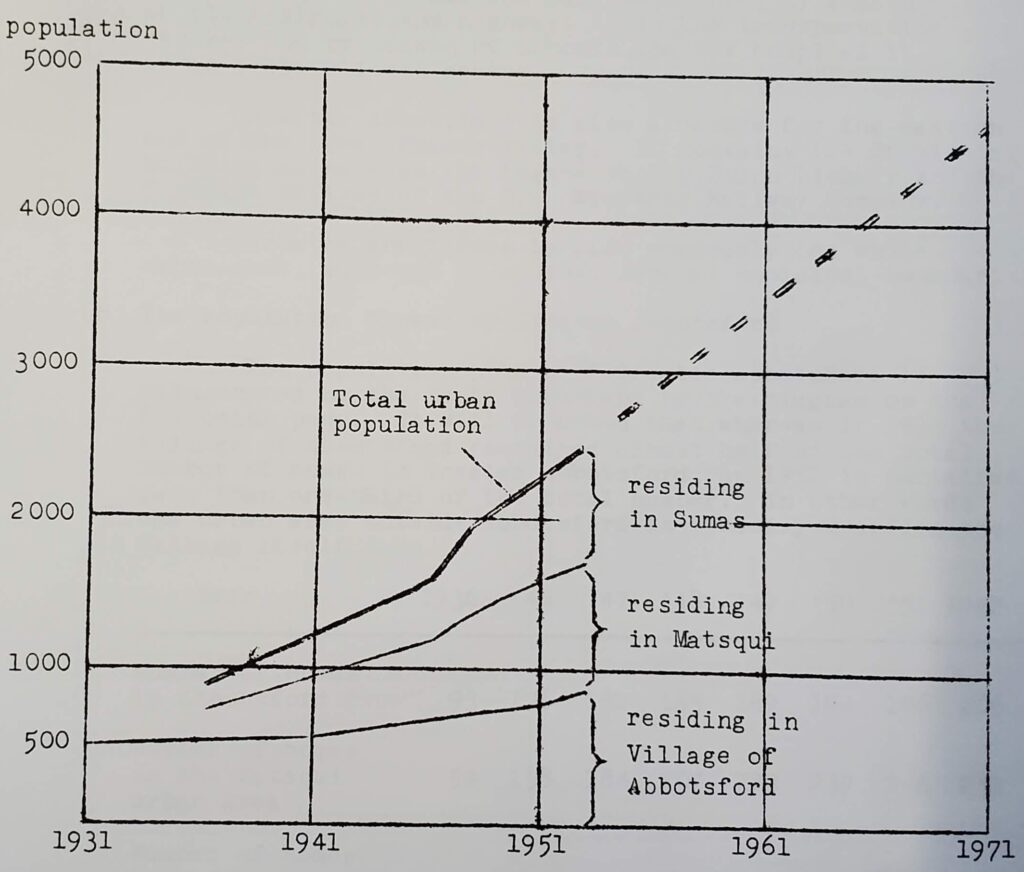
Prior to World War II, the area encompassing Matsqui, Sumas, and Abbotsford (MSA) was sparsely populated, heavily forested, and was home to numerous farms and acreage. After the war however, soldiers returned home in large numbers to settle down and begin families, many choosing the MSA area and paving the road for the Baby Boom. This swiftly transformed the natural and homogenous landscape of the area. Large farms were subdivided into smaller farms and single-family lots, leading to increased settlement in the area. At the same time, the area saw an influx of settlers from Saskatchewan (amongst other prairie provinces in Canada). Without adequate infrastructure to accommodate the rapid population growth, schools within the MSA area became overwhelmed. Classes were overcrowded, teachers were fatigued, students were displaced, and academic resources became scarce. In 1945, School District 34 was established, and thus, began a string of political tension and social pressure within the district, petitioning for better school conditions.
Student Population Prior to 1940
Up until 1940, schools built within the MSA area typically served their immediate communities, built with 1 to 3 classrooms – plenty, for the time being. Since school admissions did not often exceed 20 students per year, there was seldom any demand for the construction of more schools or classrooms. To put it into perspective, the population of the Sumas area alone (taking up a large swath of land in Abbotsford and Chilliwack), only amounted to 1850 individuals in the year 1939. On top of having a low population, the MSA area was also affected by the wartime labour shortage, further lessening the number of students in school. Students, particularly those from low-income families, often missed school to pick up jobs or help out on their farms in order to support their families. Many senior students from Phillip Sheffield High School were also being drafted into the war, leaving classrooms with far less students than before, and incidentally, their classrooms became predominantly female.

“Seriously Overloaded”
To understand the evolution of MSA schools and their education, here is some background information to acknowledge while exploring this website.
In 1943, MSA schools were reporting overcrowding left, right and center. This dramatic shift was sparked by migration. Within 4 years, Sumas’ population would jump to from 1850, to 2330 people – and increase of 480. Relative to the amount of classroom space at the time, schools were simply not ready to accommodate the increase of students in the overall resident population. This same year, school enrolment sat at 1,801 pupils. Just one year later in 1944, this number would increase to 1,946 pupils. Just like the student population, the MSA landscape was changing too. Now the reason for Sumas’ population influx largely had to do with an increase of residential lots. Around the mid 1940s, the Municipal Clerk of Sumas addressed the subdivision of farms, where a large portion of students were coming from. He stated, “two farms … sending only two or three children to school [are] now subdivided and sending about 73 pupils to the schools” (1941-1950 Newspaper). This higher enrolment left students in overcrowded classrooms, often without enough desks or seats, and overcrowded school busses. By 1945, Phillip Sheffield High School, Matsqui Superior School, Abbotsford Elementary, Poplar North and South Schools were listed as “seriously overloaded” (1941-1950 Newspaper). Overcrowding persisted with Phillip Sheffield to the point where the Abbotsford Airport had to step in and accommodate students. By 1949, the airport held 17 classrooms belonging to Phillip Sheffield High (see ‘Response to a Growing Population’).
The early 1950s were a better time for MSA schools and their students. By 1955, the MSA area was home to 3,600 students, but the opening of Abbotsford Junior Secondary in 1952 and Abbotsford Senior Secondary in 1955 essentially fixed the issue. This marked the first time since WWII that all students in the MSA area could be accommodated, ending the school population crisis.

Family Commitment Controversy
The student crisis did not even represent the number of school age children in the MSA area. As discussed previously, students were often required by their parents to help in family businesses and farms and thus, many students we held back from school. As a response, in the mid 1940s, School District #34 began issuing statements in the newspaper stating that students under grade 8 must attend school and cannot be held back. Those in grade 8 and above however, were permitted to not attend school for family labour commitments, however, families were required to search elsewhere for workers first. In a way this was likely good for Phillip Sheffield High School as extra secondary students would only add to its overcrowding.
Sources for this page:
MSA Educational Area “News Clippings” October 1941 to December 1950, (1950) The Abbotsford Reach.
School District NO. 34 (Abbotsford). “Clippings from the Abbotsford, Sumas, and Matsqui News” January 1951 to March October 21, 1953”. (1953), The Abbotsford Reach.
School District NO. 34 (Abbotsford). “Clippings from the Abbotsford, Sumas, and Matsqui News” October 28, 1953 to March 7, 1956”. (1956), The Abbotsford Reach.
Various archival objects from the The Reach Archives in Abbotsford, BC.
